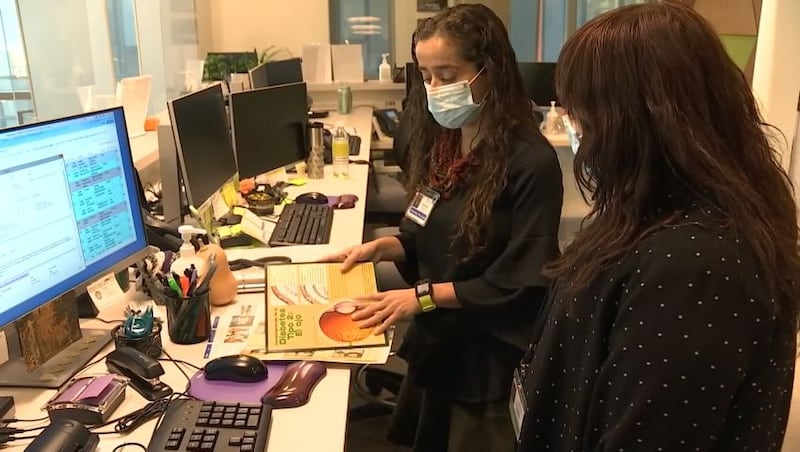The alarming lack of doctors for a growing Latino population in our state.
Why LatinX physicians are in such short supply and what is being done to address it.
The state’s Latino population has grown to just over 13%. But Latinos only make up 3.4% of the state’s doctors.
And local experts say that disparity is showing up in the poor health outcomes for an entire community.
This is a rare sight.
A Latina born in Vera Cruz, Mexico, devoting her medical career to caring for the state’s Latin X population and Dr. Lorena Alarcon-Casas Wright knows all too well how unusual she is.
“They’re not enough LatinX Spanish-speaking providers in the state of Washington,” said Dr. Wright. “And we do have a big population of LatinX patients. So we need more representation.”
We are in that position because “I think we haven’t paid attention,” she says.
And while we weren’t paying attention, Latinos grew into the largest minority group in Washington state. People, mostly from Mexico, they do the back-breaking work many Americans regard with scorn. And they stay.
In 1980, just 2.9% of the state’s population was LatinX. By 2018, the population had grown to more than 13%, nearly one million people.
But the number of Spanish-speaking doctors has not kept pace.
“And we know this from research we’ve done,” says Dr. Leo Morales, co-director of the Latino Center for Health at the University of Washington.
He was among those who recently worked on the Washington State Latino Physician Workforce study. It found a critical shortage of Latino physicians, just 3.4% of the state’s medical workforce.
Dr. Morales, a Seattle native whose parents were born in Bolivia, says that has consequences.
“When you have linguistic and cultural concordance between similarity, concordance meaning similarity between the patients and doctors, care is better,” he says. “Outcomes of care are better. And patients have better experiences with their doctors.”
The issue is suddenly visible because of COVID-19′s devastating impact on Latinos: Forty-three percent of the state’s COVID-19 patients are Latino; more than three times the state’s LatinX population.
Why is this happening?
“The failure to diversify medical schools,” said Dr. Morales.
“There’s a lack of Latino teachers, of professors, and physicians,” he says. “And so young people are not seeing themselves in the professions, in the health professions. So I include health professions because what we’ve studied is among physicians. But it also exists among nurses and dentists and pharmacists.”
"Even so, efforts are being made to try to reduce the disparities in health for the LatinX community. The University of Washington is holding a LatinX diabetes clinic right here on Tuesdays. So that both providers speak the same language, so nothing about their health is lost in translation.
That work is happening at UW Medicine’s LatinX Diabetes Clinic in South Lake Union.
Doctor Wright is the clinic’s director, specializing in a disease that is the greatest killer of Latinos. Her fluency in Spanish is an asset, especially when having hard conversations about changes in diet and lifestyle.
“It is not just the language but also understanding the culture,” says Dr. Wright.
Still, she is hopeful for the future.
“I am,” she said. “Yes, I am. We have a lot of things to work on and a lot of things that need to improve. But we are having those conversations.”
Conversations she believes will eventually translate into a health care system designed to treat all Washingtonians no matter where we come from.
The UW LatinX Diabetes Clinic will begin holding its weekly screenings Tuesday, November 17 and every Tuesday after that.
Here’s a link to their website.
Cox Media Group








